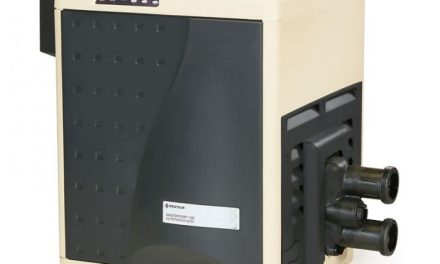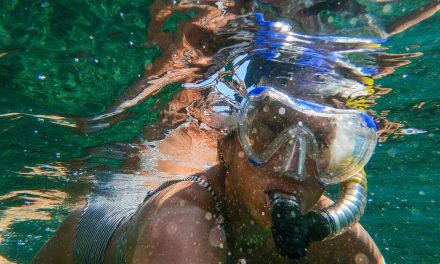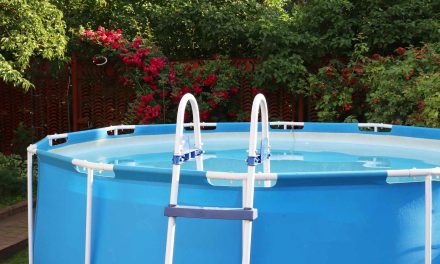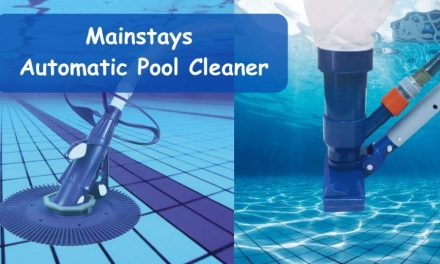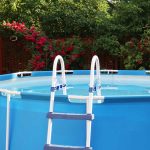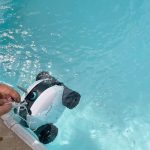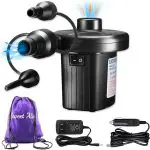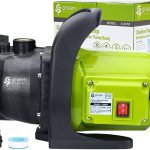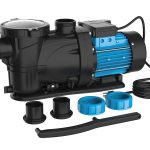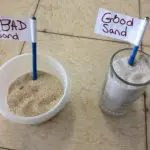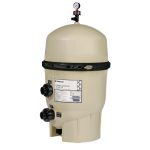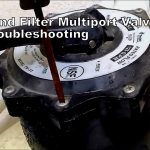To install a pool pump yourself, you’ll need to handle the wiring and plumbing involved. However, hiring a pool service is also an option.
Having an energy-efficient pool pump can help maintain your pool effectively.
Tools Needed
To install a pool pump, you’ll need a few essential tools: a screwdriver, pliers, adjustable wrench, pipe cutter, Teflon tape, and a bucket. These tools will help you disconnect the old pump, cut the plumbing, and install the new pump.
Begin by disconnecting the electrical connections and cutting the plumbing lines. Make sure to install the necessary fittings for the new pump and attach the pipes securely. Next, connect the wires and plug in the neutral wire. Finally, prime the pump to ensure proper functioning.
Hiring a professional pool service is an option if you’re not comfortable with the wiring and plumbing involved. Installing an energy-efficient pool pump can help you maintain your pool effectively, whether you choose to DIY or seek professional assistance.
Disconnecting The Electric
Installing a pool pump can be a DIY project, although hiring a professional is also an option. The installation process involves both wiring and plumbing tasks, which a pool service can assist with. Regardless of who does the installation, it’s important to consider using an energy-efficient pool pump to ensure proper maintenance of your pool.
By following the necessary steps and guidelines, you can safely disconnect the electric supply before proceeding with the rest of the pump installation process. Remember to always prioritize safety and consult relevant resources or experts if needed.
Cutting The Plumbing
Installing a pool pump can be a do-it-yourself project, but hiring a professional for the task is also an option. This is because the installation process involves both wiring and plumbing, which may require expertise. If you decide to install it yourself, it is essential to ensure that you have an energy-efficient pool pump to maintain your pool effectively.
By following the right instructions and guidelines, you can successfully install a pool pump and ensure that your pool remains clean and healthy for swimming. Remember to consider safety precautions and consult professionals if needed to make the installation process smooth and hassle-free.
Installing The Fittings
When it comes to installing a pool pump, it’s important to follow the proper steps. First, disconnect the electric connection to ensure safety. Next, cut the plumbing to remove the old pump. Then, install the new fittings and connectors. After that, secure the new pump in place.
Attach the pipes to the fittings and connect the wires properly. Remember to plug in the neutral wire and then prime the pump before starting it. By following these steps, you can successfully install a pool pump and ensure your pool’s proper maintenance.
Hiring a professional pool service may also be an option if you prefer assistance with the wiring and plumbing aspects of the installation.
Installing The New Pump
Installing a pool pump can be a DIY project, but it may be wise to hire a professional for the job due to the electrical and plumbing aspects involved. A pool service can assist with the installation of both the pool pump and filter.
However, whether you choose to tackle it yourself or seek professional help, having an energy-efficient pool pump is essential for maintaining your pool effectively. By following the manufacturer’s instructions and taking necessary safety precautions, you can ensure a successful installation that will keep your pool running smoothly.
Remember to consult with local regulations and codes before starting the installation process to ensure compliance. Installing a pool pump is a necessary step in keeping your pool clean and functioning optimally.
Attaching Pipe To Fitting
To attach the plumbing pipes to the pump fittings, follow these instructions carefully. Start by cutting the plumbing to the appropriate length. Make sure to leave enough pipe to fit securely into the pump fittings. Next, clean the ends of the pipes and the pump fittings to remove any debris.
Apply PVC primer to both the pipe and fitting, and then apply PVC glue to the inside of the fitting and the outside of the pipe. Insert the pipe into the fitting, making sure it is aligned properly. Hold the pipe in place for a few seconds to allow the glue to set.
Repeat this process for each pipe and fitting until all connections are secure. Finally, check for any leaks and make any necessary adjustments. By following these steps, you can successfully attach the plumbing pipes to the pump fittings for your pool.
Connecting Wires
Installing a pool pump can be a DIY project, but it involves both wiring and plumbing. If you prefer, you can hire a professional to do the job. Having an energy-efficient pool pump can help maintain your pool effectively. Whether you choose to install it yourself or not, it’s important to ensure that the electrical wires are properly connected to the pump.
This step is crucial for the pump to function correctly and safely. Follow the manufacturer’s instructions and guidelines carefully when connecting the electrical wires. Make sure to use the appropriate tools and take necessary safety precautions during the installation process.
Once the wires are securely connected, you can proceed with priming the pump and enjoying your clean and well-maintained pool.
Priming The Pump
Installing a pool pump can be a DIY project, but you may opt to hire a professional for the job. This installation involves both wiring and plumbing, and a pool service can assist you in the process. It is important to have an energy-efficient pool pump to ensure proper maintenance of your pool.
Whether you choose to tackle the installation yourself or seek professional help, having a functional pool pump is essential for optimal pool performance. Remember to follow the necessary steps, including priming the pump, to ensure its efficiency. With the right tools and proper guidance, you can successfully install a pool pump and keep your pool clean and well-maintained.

Credit: m.youtube.com
Frequently Asked Questions Of How To Install A Pool Pump?
Can You Install A Pool Pump Yourself?
Installing a pool pump yourself is possible, but it involves both wiring and plumbing. Consider hiring a professional for assistance.
What Wire Do You Bury For A Pool Pump?
Bury a 120-volt wire (12-gauge) or a 240-volt wire (10-gauge) for a pool pump.
How Do You Install A Pool Filter Pump?
To install a pool filter pump, follow these steps: 1. Disconnect the electric connection. 2. Cut the plumbing. 3. Install the fittings. 4. Install the new pump. 5. Attach the pipe to the fitting. 6. Connect the wires. 7. Plug in the neutral wire.
8. Prime the pump. Consider hiring a pool service for professional installation.
Conclusion
Can We Take Away From How to Install a Pool Pump? Installing a pool pump yourself can be a rewarding DIY project, but if you’re not comfortable with the wiring and plumbing involved, hiring a professional can ensure a seamless installation.
Whether you choose to do it yourself or enlist the help of a pool service, having an energy-efficient pool pump is crucial for maintaining the cleanliness and functionality of your pool. An energy-efficient pump can help reduce energy costs and increase the overall efficiency of your pool system.
By following the step-by-step instructions provided in this blog post, you can confidently install your pool pump and enjoy a well-maintained pool all summer long. So, roll up your sleeves and get ready to tackle this project, or reach out to a professional for assistance, and take the first step towards a crystal-clear and properly functioning pool.



